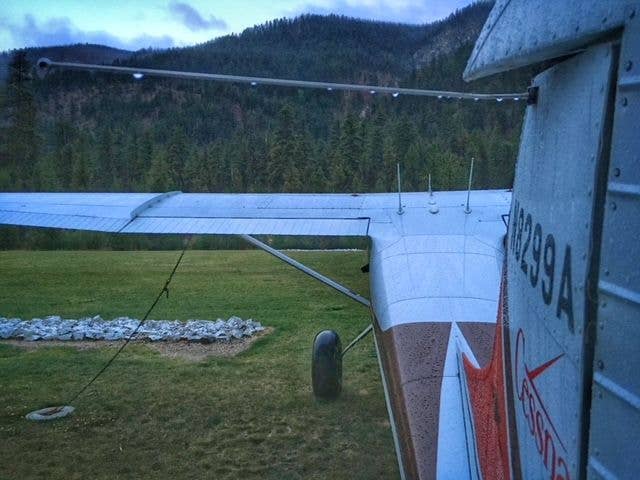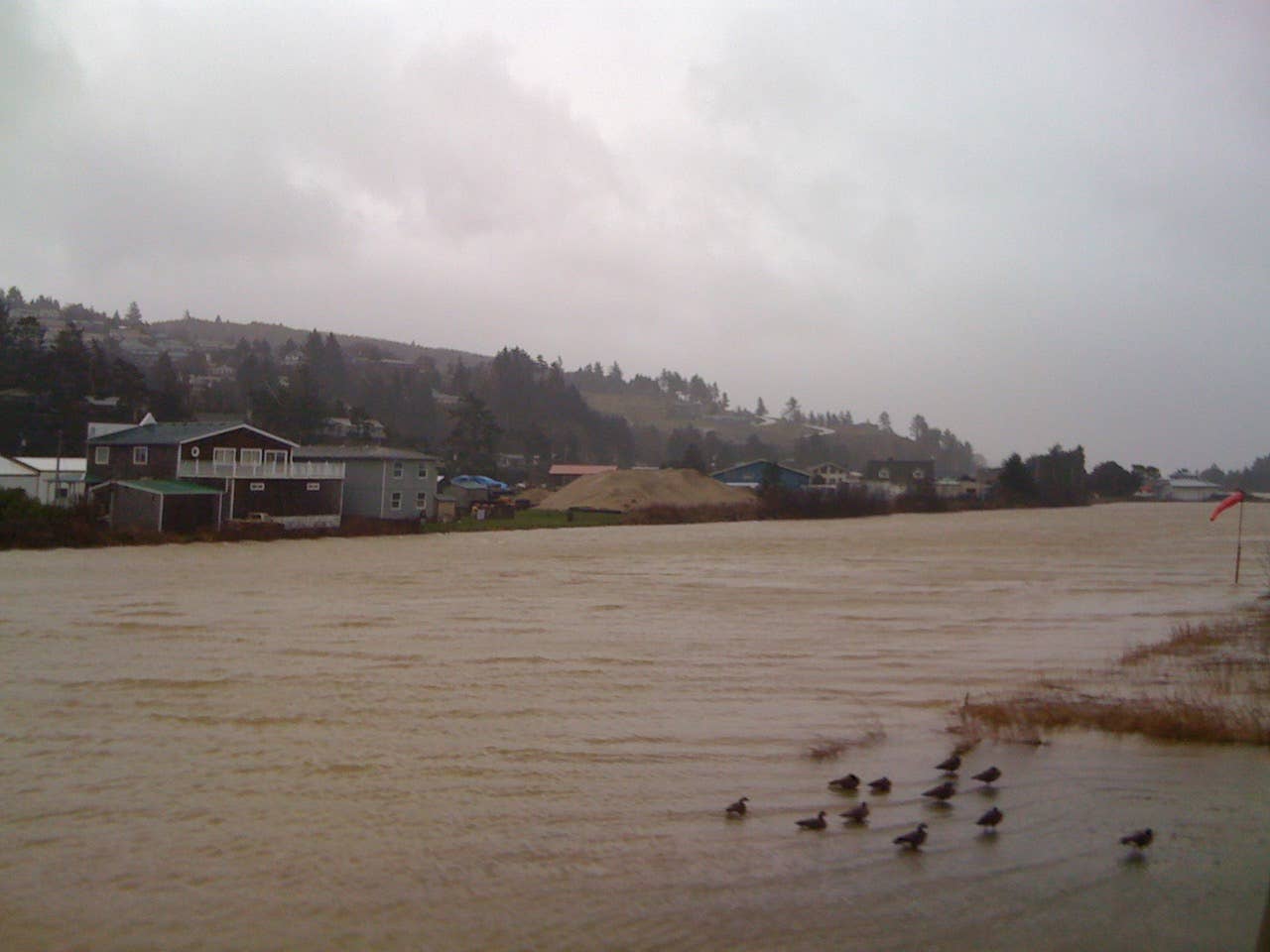Beware of the Benign
Rain showers and thunderstorms are one and the same from a pilot’s perspective.

[Credit: Jim Stevensen]
What’s the most significant weather threat for summertime flying? Here’s a hint: it’s not thunderstorms. Sure, it’s vital that pilots flying any type of aircraft exercise extreme caution when flying near a thunderstorm. Certainly, any pilot who tangles with a thunderstorm might pay the ultimate price. But it doesn’t take a supercell thunderstorm to ruin your day. So, given how many general aviation pilots nowadays rely on data link weather for avoidance, we need to modify the training narrative and move away from a discussion of thunderstorms to a discussion of convection.
If you're not already a subscriber, what are you waiting for? Subscribe today to get the issue as soon as it is released in either Print or Digital formats.
Subscribe NowAvoid thunderstorms. This stark statement that has been thrown at pilots over the last century portends danger and seems like a reasonably cut-and-dried message. This is understandable, although it misses the mark, and it's not the most complete message to send to pilots. There’s more to the story that has yet to be told.
The National Severe Storm Laboratory (NSSL) defines a thunderstorm as “a rain shower during which you hear thunder. Since thunder comes from lightning, all thunderstorms have lightning.” You may have just chuckled reading this definition. However, “rain shower” is the key phrase to notice. In other words, one minute before the first lightning strike, it technically cannot be called a thunderstorm. Instead, it’s called a rain shower. A rain shower may be just as dangerous as—and may be more dangerous than—a thunderstorm. The new narrative that should be shouted from the tops of the airport hangars is to “beware of the benign.”
From the outset, understand that showery precipitation is, by definition, a form of moist convection. It may be shallow in thickness, or rather deep. A thunderstorm is a specific class of deep, moist convection, namely one that contains lightning. Shallow, moist convection might lead to a rough ride, but won’t likely contain jarring convective turbulence. Deep, moist convection, on the other hand, is bad news. And while no two rain showers are alike, avoidance is strongly encouraged with or without lightning.
In fact, during the summer you may hear your local broadcast meteorologist or weather personality say during the news, “expect scattered showers this afternoon.” The term “showers” tends to be glossed over by many pilots as a benign weather condition. Pilots should translate this as, “expect scattered deep,moist convection this afternoon,” since rain showers and thunderstorms are, for all intents and purposes, one and the same from a pilot’s perspective. In fact, not too many decades ago, the term “thundershowers” was commonly used but was slowly abandoned in favor of the phrase “showers and thunderstorms.” While there is a technical difference between a rain shower and thunderstorm, it’s not a technicality that should matter to a pilot. Both should be treated the same and avoided.
Convective Precipitation
As the sun beats down on the earth’s surface during the day, an imbalance in temperature is created. The convective process that starts out as dry eddies transfers heat energy away from the surface to reduce this imbalance, through a process called convection. These dry eddies—more commonly called thermals—expand and cool as they ascend and may reach saturation to produce shallow, moist convection called cumulus clouds. When there’s mid-level instability aloft or some form of outside energy contribution available (e.g., a frontal system), these clouds can grow into congested or towering cumulus, which is referred to as deep, moist convection. At this point in the convective process, an aircraft flying through these clouds may encounter severe or extreme turbulence. But what few pilots appreciate is that they can also produce microbursts be-low these deep convective clouds when the precipitation core falls out of these clouds to the surface.
Convective precipitation can be characterized in one extreme as the coalescence of raindrops formed where the temperature profile within the cloud is warmer than 0 degrees Celsius. This is the kind of showeryprecipitation you might get in tropical areas such as Hawai‘i or the Caribbean. At the other extreme is convection that occurs at temperatures well below 0 degrees Celsius within most of the cloud, with all of the precipitation originating in the ice phase including snow and graupel, a form of soft hail.
Significant electrification in moist convection occurs as a result of bouncing collisions between smallice (solid) and graupel that grow at the expense of supercooled cloud drops (liquid). Within the cloud, this is followed by the gravitational separation of charged particles that enable the discharge we call lightning. To get electrified convection (i.e., a thunderstorm),the cloud top temperature needs to be sufficiently cold enough to support precipitation originating in the ice phase. These conditions occur in deep, moist convective updrafts. However, when tops are not as cold (not as high), lightning may be absent. This is what meteorologists label low-topped convection.
So, all thunderstorms begin as rain showers. However, not all rain showers grow up to be mature thunderstorms. In other words, a little rain shower is the beginning of the mature stage of the convective process and should be viewed as such. As a rain shower deepens, it can develop dangerous convective turbulence.
Drs. Ted Fujita and Fernado Caracena stated long ago that most microbursts occur from benign-looking cells. You may recognize the name Fujita. Dr. Fujita was the research meteorologist and professor at the University of Chicago who defined the microburst. The way tornado intensity is quantified today is named after him, namely, the Fujita scale.
He defined the microburst as a violent outflow from convection that occurs on a spatial and temporal resolution of 1 to 4 km and 2 to 5 minutes, respectively. To put that into perspective, a microburst is about the size of the runway complex at most medium to large airports and occurs within a timeframe of an aircraft on a five-mile final approach to land.
Here’s the problem. Pilots—whether flying light, medium, or heavy aircraft—will not be bitten by a supercell thunderstorm. That’s because those storms look ugly, and we want to avoid them. However, a benign-looking cell such as a high-based rain shower is far more inviting. The high base gives the pilot the impression it’s safe to fly under and lures them into a false sense of security. Often, there’s no visible rainshaft present until it’s too late
The Microburst Threat
Here’s a quote from an article written by Captain William W. Melvin entitled, "Wind Shear Revisited." It appeared in the November 1994 issue of Air Line Pilot Magazine: “Many pilots have been trained to avoid large supercell-type thunderstorms in the belief that this will prevent encounters with microbursts. Yet no evidence exists that any of the known microburst encounters have occurred in supercell storms. Dr. Ted Fujita and Dr. Fernando Caracena, recognized authorities in this field have repeatedly emphasized that microbursts are frequently generated from benign-appearing cells. Many ‘experts’ who disagree with Drs. Fujita and Caracena have empha-sized the supercell storms with warnings of dangers of gust fronts. These so-called experts are leading pilots down the primrose path for microburst encounters.”
Convection with high cloud bases is a perfect environment for the birth of a microburst. Often, the air below the convective cloud is relatively dry. However, there’s no accepted definition for the depth of this dry air before it portends danger. A good example of such an environment was on August 2, 1985, in Dallas, Texas, around 6 p.m. CDT. The surface temperature and dew point were reported at 101 degrees Fahrenheit and 65 degrees Fahrenheit, respectively, just before Delta Air Lines Flight 191 succumbed to a microburst while the Lockheed L-1011 was on approach to Dallas-Fort Worth International Airport (KDFW). This is a dewpoint depression of 35 degrees, equating to a relative humidity of 31 percent at the surface. In other words, extremely dry air was in place over the airport. The estimated ceiling at KDFW shortly before the accident was broken at 21,000 feet. This certainly would not appear threatening and is far from being a supercell event.
Those dry conditions allow for evaporative cooling to occur. Essentially as the precipitation core begins to fall out of the base of the cloud into this very dry air, the raindrops begin to undergo rapid evaporation. Evaporation is a cooling process making the descending air below the cloud base denser and heavier. This allows the shaft of cold air falling out of the convection to accelerate rapidly toward the surface, sometimes with a speed of 100 miles per hour or more. While microbursts can and do occur within supercell thunderstorms, pilots and crews are more likely to discount potential danger with benign-appearing cells. Many of these are low-topped convective rain showers, often with a lot of blue sky throughout the area.
This is not to say that every benign-appearing cell will produce a microburst. However, microbursts are not as rare as most pilots assume. I remember one long cross-country training flight with an instrument student from Chicago Executive Airport (KPWK) to Eagle, Colorado. We had planned a quick fuel stop in Nebraska. When we arrived, nearly a dozen cells were in the vicinity, including a thunderstorm hanging out over our destination. With my student under the hood, I took this opportunity to give him a chance to ask ATC for a hold so we could decide the best course of action, since our planned destination wasn’t viable. While we were making perfect wind-corrected one-minute turns at 8,000 feet in the hold with blue sky above us, I saw at least five dry microbursts occur in the distance in a span of about 10 minutes. I saw a circular ring of dust on the surface appear underneath benign-seeming cells. The cloud bases were about 12,000 feet.
We diverted to a different airport and asked ATC for a practice ILS approach. After landing, we tied the aircraft down on the ramp and started to walk to the FBO, only to be met with a blast of sand and dust at our backs that was so intense we couldn’t pull open the door to the FBO to escape it. I wouldn’t have wanted to tangle with that on final approach. It was likely the result of another dry microburst nearby. Given their small scale, microbursts may go unnoticed unless they occur near a major airport or cause damage to a populated area. If you Google “microburst damage” you will find countless pictures of the extreme damage they can cause to vegetation and structures, sometimes more than you’d see with a small tornado. Given that they occur on such small spatiotemporal scales, they are also quite difficult to detect so that pilots can be given sufficient advance warning.
One of the best utilities to detect microbursts (wet or dry) as they happen is terminal Doppler weather radar (TDWR). These are located near many high-impact airports throughout the U.S. and have a range of 60 nm. Unlike the airport surveillance radar (ASR) typically collocated on the field, TDWR is typically sited about six to seven miles from the airport so that it is in a position to scan the primary approach and departure corridors. TDWR can detect and track convective outflow boundaries (gust fronts) and microbursts and provide an alert to controllers, which can be relayed to the pilot.
A Healthy Respect
Most pilots are used to looking at the Nexrad surveillance scan of the radar that measures the base reflectivity. However, it’s the Doppler scan of the TDWR that is the crown jewel when it comes to detecting a microburst. This is referred to as the base velocity data. A microburst is a rush of concentrated air flowing nearly straight down (although there can be rotation of this air) out of the cell that may strike the surface and spread outward like pouring pancake batter on a griddle.
The velocity data does not show the velocity of the downward motion of the air itself. It simply quantifies the magnitude of the velocity component of the wind toward or away from the radar site, once the air from the microburst or downburst is moving horizontally. And, as the microburst begins to move outward, those hydrometeors (raindrops, dust, sand, insects, etc.) intersect the radar beam and are detected and show up with a classic dual node signature. This signature can be quickly detected by TDWR, with subsequent alerts generated. Hydrometeors that move tangentially to the radar beam show up as zero velocity, although the actual magnitude of the wind in that direction may be extreme.
It’s fair to say that most seasoned pilots have a healthy respect for Mother Nature, especially as it relates to deep, moist convection. But it doesn’t take a full-blown supercell thunderstorm to ruin your day. Please beware of the benign.
This article was originally published in the March 2023 Issue 935 of FLYING.

Sign-up for newsletters & special offers!
Get the latest FLYING stories & special offers delivered directly to your inbox







